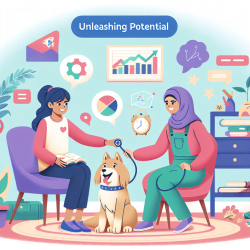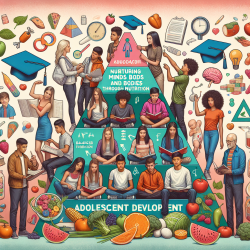In the realm of speech therapy, understanding the nuances of speechreading is crucial for practitioners aiming to improve their clients' abilities. The research paper "A Comparison of Speechreading Abilities Using Live and Recorded Presentations" by Winkelaar, Arnold, and Johnson offers valuable insights that can significantly enhance your practice. This blog will delve into the key findings of the study and provide actionable tips to help you apply these insights effectively.
Understanding the Study
The study compared speechreading abilities using live and recorded presentations. Nineteen participants viewed both live and videotaped speechreading materials. The results were striking: participants scored significantly higher in the live condition, with a mean difference of 10.19% for word scoring and 10.87% for meaning scoring. This suggests that live presentations provide more visual information, making speechreading easier.
Key Findings
- Live presentations resulted in significantly higher speechreading scores compared to recorded presentations.
- Word scoring yielded higher performance estimates than meaning scoring.
- Live-video correlations indicated that predicting optimal speechreading performance from recorded scores is feasible.
Practical Applications
Based on these findings, here are some practical steps you can take to enhance your speechreading therapy sessions:
1. Prioritize Live Sessions
Whenever possible, prioritize live sessions over recorded ones. The study clearly shows that live presentations offer more visual cues, leading to better speechreading performance.
2. Optimize Viewing Conditions
Ensure that the vertical viewing angle is between -35 and +30 degrees and the horizontal viewing angle is between 0 and 40 degrees. The optimal viewing distance is approximately five feet. These conditions maximize visual comprehension.
3. Use Gestures and Environmental Cues
Incorporate gestures, cue cards, and related pictures to enhance speechreading performance. These additional visual cues can significantly improve comprehension.
4. Consistent Presentation
While live presentations are preferable, recorded materials offer the advantage of consistent presentation. Use recorded sessions to standardize testing and training, ensuring that all clients receive the same quality of visual information.
5. Further Research
The study recommends further research using different speakers and test stimuli. As a practitioner, staying updated with the latest research can provide new techniques and insights to improve your practice.
Encouraging Further Research
The study by Winkelaar, Arnold, and Johnson highlights the need for ongoing research in this area. By staying informed and continuously seeking new knowledge, you can ensure that your therapy methods are always at the cutting edge.To read the original research paper, please follow this link:
A Comparison of Speechreading Abilities Using Live and Recorded Presentations.










